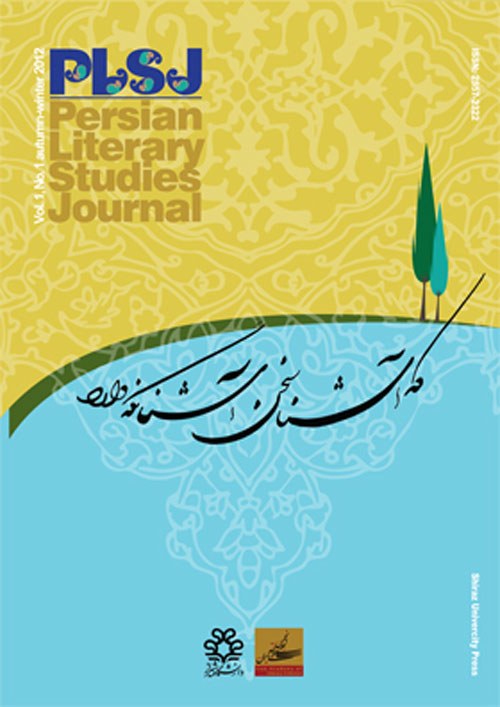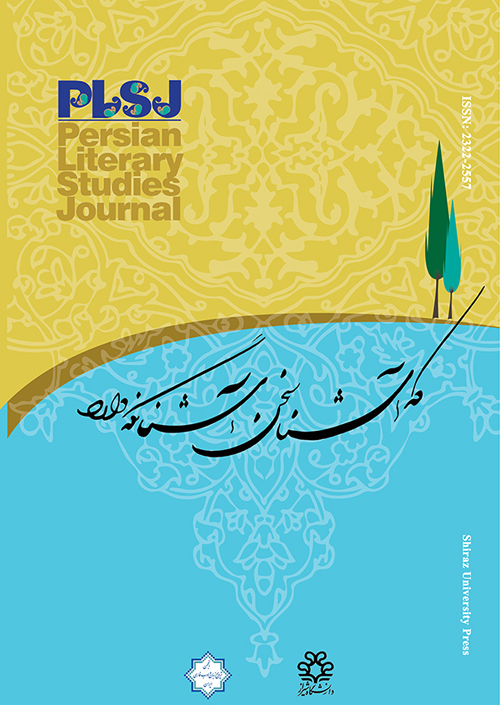فهرست مطالب

Persian Literary Studies Journal
Volume:7 Issue: 12, Summer-Autumn 2018
- تاریخ انتشار: 1399/05/25
- تعداد عناوین: 5
-
Pages 1-19
This article is concerned with the relationship of language and city in Amir Naderi’s trilogy of films on New York, comprising of Manhattan by Numbers (1993), A, B, C… Manhattan (1997), and Marathon (2002). By dint of a narrative relied on spatiality, he is in fact able to causally link the solitude and the spectral existence of his protagonists to the lack of a common language for reconciliation and integration within the urban landscape. Whereas this narrative approach only minimally uses plot, it brings about an opportunity for sensory perception. Rather than employing narrative as a form of collective daydreaming where the real social conflicts are resolved on a mere fantastical level, Naderi’s films highlight the exclusion of the individual from the collective but in doing so they allow for a more totalizing understanding of social existence. Further, this tendency towards spatiality is concomitant with the inadequacy of language (as a fixed set of signifiers and signifieds) for the articulation of the individual’s experience within the vaster context of the city. By putting the stress on the cityscape, Naderi appears to be promoting city itself as a discourse whose semantics unravels only through direct physical contact. I wish to examine corporeal communication in these films in relation to the semiology of urban space as outlined by Roland Barthes and Henri Lefebvre.
Keywords: Space in cinema, City as discourse, Bodily perception, Spatial narration, Rhythmanalysis -
Pages 21-38
This paper, while focused primarily on the narrative transformation of Sadeq Chubak’s Tangsir from novel to film adaptation, offers a general survey of adaptation history in Iran and also investigates the nature of Iranian adaptation from both foreign and domestic sources. Drawing on Gerard Genette’s theories of Narratology, especially his notion of hypertextuality, transpragmatization and transdiegetization, we would discuss the changes made to the hypotextual story from a narratological perspective. This paper strives to demonstrate how adaptations of foreign and domestic sources vary, in that adaptations of foreign sources tend to incline towards diegetic transposition, which entails changes to time and setting and conversely domestic sources lend themselves more to pragmatic transpositions, most of which tend to change and modify certain plot elements for aesthetic and/or socio-political reasons which consequently change or dramatically expand the thematic aspects of the story. The current research investigates both divergences and convergences of the narrative elements of the story such as narrator, point of view, perspective, plot and characterization in a comparative manner between the two mediums, trying to uncover the reasons for narrative transformations. This study also proposes the term director/editor for film directors, who in their adaptations of literary works recline heavily on pragmatic transpositional processes.
Keywords: Hypertextuality, Transpragmatization, Transdiegetization, Iranian adaptation -
Pages 39-68
This article is concerned with William Shakespeare’s famous farce play The Taming of the Shrew and its Persian adaptation as an Iranian film called Gorbe ra dame Hejleh Mikoshand in 1969. The point that informs the inquiry is the way the film departs and differs from the play in relation to the issue of women within the patriarchal society. The play and the film will be examined separately in detail, while their similarities and differences will be also accounted for. By going through the structure of the play, in particular by showing attention to the importance of the Christopher Sly Induction which frames the narrative of the play, as well as surveying the critical looks on the play throughout the last century, it will be argued that the Bard’s work, far from being an anti-feminine play that reflected the male authority of the society of its time, allows for new possibilities for the autonomy of women within the patriarchal system. The Persian adaptation, however, deliberately forecloses the same possibilities by trying to cater to the taste of its mainstream male, chauvinist audience. The film will be exclusively investigated in the context of filmfarsi (a popular and mainstream cinema in Pre-Revolution Iran) by dissecting the components of the genre to show the deep, irreconcilable dichotomy between men and women in the Pahlavi era
Keywords: adaptation, Iranian cinema, filmfarsi, Patriarchy, femininity -
Familiar and Foreign: Identity in Iranian Film and Literature, Manijeh Mannani and Veronika Thompson (eds.), Edmonton: AU Press, 2015, paperback, ISBN 978-1- 927356-86-9, 264 ppPages 69-72


